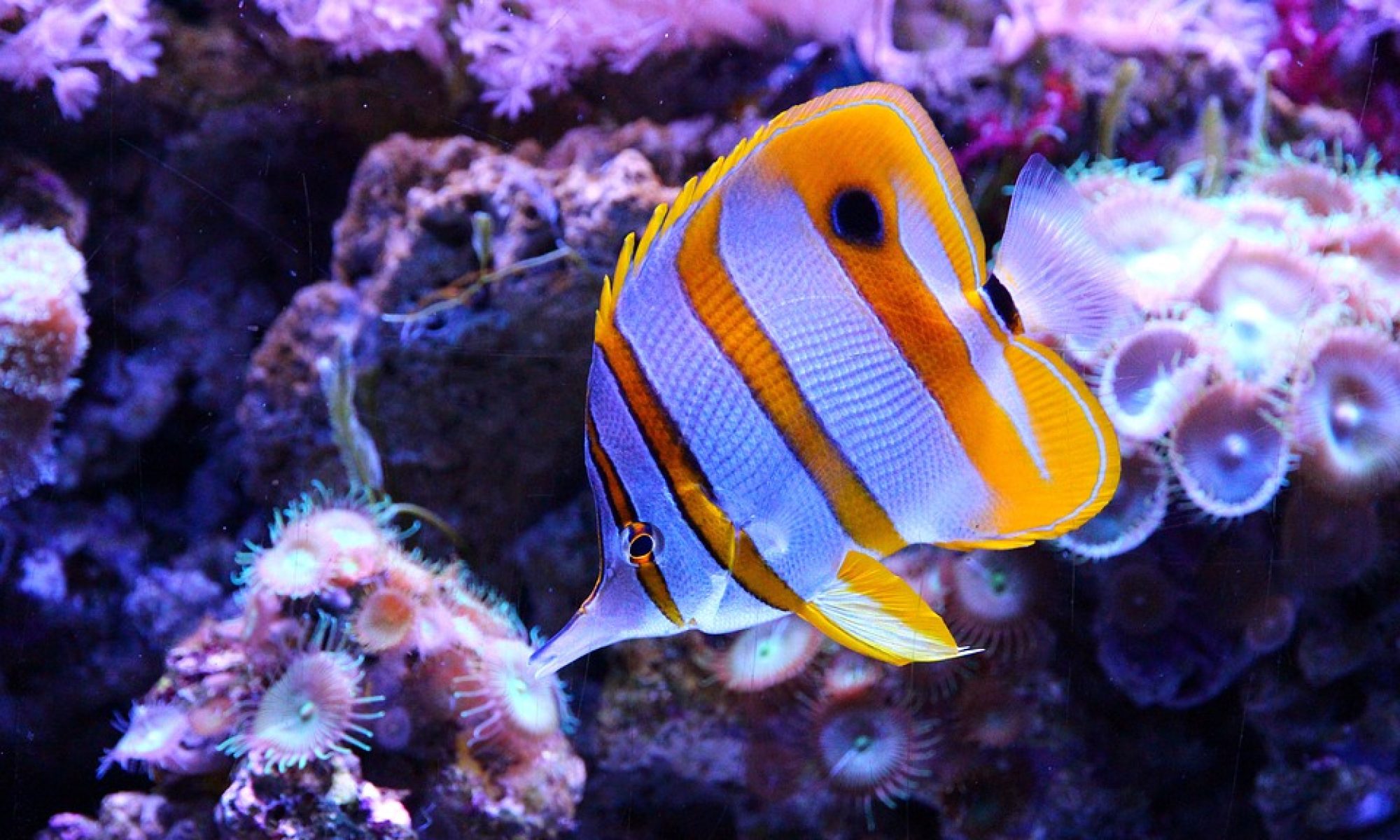
Clown Pleco, or Panaqolus Maccus is a small loricariid that is endemic to Venezuela where its found in the tannic Apuré and Caroni river basins, this species of pleco was properly described in 1993 by Donald J. Stewart and Scott A. Schaefer.
The Panaloqus Maccus is one of the most common small, striped loricariids species in the fishkeeping hobby.
These Clown Plecos grow up to 8.8 cm. ( 3.5 in.), many people think that these plecos have no potential use since many other plecos can clean tanks while these only clean driftwood. This specie of loricariid natural environment is driftwood tangles near the riverbanks in Venezuela.
The Clown Plecos’s Appearance
The Clown Pleco has a striped pattern. However, Clown Pleco colors may change once they get older.
The body is dark black and encircled with bands that vary in color from off-white to a bright orange, Clown Pleco’s coloration tends to be the brightest and liveliest when they are younger but once they have matured the color fades away.
There are also specimens that instead of having straight bands, have broken or wavy bands. These specimens can be found in the Orinoco River and its streams in Bolivar State, Venezuela. The colors of these pleco fish vary in location from where they were collected, many collection sites offer different patterns, in which they began giving them several L-numbers such as; L162, LDA022 and L104.
Panaqolus SP.L104
The panaqolus L104’s body is black with a silverish white bands encircle its body, this species body has a zebra like design.
Panaqolus SP.L162
The panaqolus L162’s body is grey with thin bright orange bands encircling its body, this species front has bright orange specks above its eyes and mouth.
Panaqolus SP.LDA022
The panaqolus LDA022’s body is dark back with thin off-white bands encircling its tail, while at the front has small thin white lines and small spots underneath its eyes and mouth.

Clown Pleco Set-up + Tank Temperatures
Clown Pleco are known for eating driftwood, because it is the thing that these species of plecos lived with most while they were still in the tannics of Venezuela, in the wild these plecos eat driftwood, and they will skim on driftwood decorations in the aquarium.
The water temperature for your plecos should be kept around neutral, from pH- 6.8-7.6. The temperature should be kept from 23- 28 °C (73-82 °F), When it is dry season you should keep you pH at 7.5 and your Temperature from 27 °C (80 °F ).
When setting up a tank for these (or any kind of) wood-eating plecos, keep in mind that wood is not digested very well.
Clown Pleco produce grand amounts of solid waste, which can look unsightly, especially in an aquarium with plants!
Filtration and flow both help to remove this, as well as large, regular water changes with a good gravel vacuum.
Tank temperament + compatibility with other fish
Clown Plecos are easygoing, slow moving fish. However some of the larger types of pleco can be very aggressive at times.
Clown Pleco can safely share a tank with other freshwater fish that are similar in size and temperament to themselves, Clown Pleco should not be kept with extremely small fish as they may hurt them, neither should they be kept with other species of pleco as they tend to be very territorial.
The majority of smaller species of pleco are easy to maintain and are exceptional for novice fish keepers, some of the larger pleco species can be aggressive and they would be easier for experienced fishkeepers. Clown Pleco are most active during the night.
Clown Pleco feeding
Driftwood should always be present so they have a constant supply, which is part of their diet. They will eat algae from glass and rocks, but unfortunately, algae is not sufficient to keep this species of pleco alive long enough.
Spirulina tablets can also be eaten by some pleco, but they tend to prefer standard pleco vegetables—
-zucchini
-cucumber
-squash
-whole peas
-yams
These vegetables can be fed raw or lightly boiled to help them sink.
In extension, Clown Pleco should also get meat for a healthy diet such as frozen daphnia, bloodworms, blackworms.
Clown Pleco Breeding

Clown Pleco vs BN pleco
It is very hard to breed Clown Pleco, if you want to breed these species of plecos you need to set up an aquarium with plenty of driftwood and many hiding places for these pleco.
Pros + Cons
Clown pleco Bn pleco
| Pros | Cons | Pros | Cons | |
| Cheaper | Need driftwood | Eats algae | More expensive | |
| Available at stores | Do not eat algae | Beautiful | Hard to find | |
| Smaller | Breeding is harder | Cleans tank | Can be aggressive |
Is the Clown Pleco fish the right aquarium pet for you?
Clown pleco can be cheap and are amazingly colourful and pretty! These pleco need Driftwood and they are always available at stores online or just a pet store, They are smaller than most pleco! They do not eat algae and do not clean the tank…
They will eat almost anything too!
Australia- livefish.com.au
Butterfly Clown Pleco (L168) A rare fish and very efficient algae eater, this pleco will eat most forms of algae that occur in aquaria. The attractive colour pattern can vary according to aquarium conditions or the fish’s mood.
United kingdom- tropco.co.uk
L number plecos on sale
United states- Azgardens.com
The Clown Pleco Algae Fish is another beautiful and helpful aquarium fish.
Canada- Fishgallery.ca.

